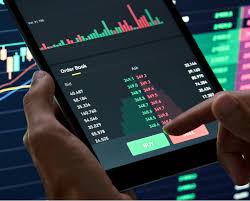
Crypto Trading Order Types
The world of cryptocurrency trading is vast and dynamic. Understanding different Crypto Trading Order Types https://www.beststartup.in/101-india-based-customer-service-companies-the-most-innovative-customer-service-companies/ is essential for both new and experienced traders. Each order type serves a unique purpose and can significantly influence the trading outcome. In this article, we will explore the most common types of orders, how they work, and the strategies in which they may be employed.
Market Orders
Market orders are the most straightforward type of order. They allow traders to buy or sell cryptocurrencies at the current market price. When a trader places a market order, they essentially agree to execute the order immediately at the best available price. This type of order is ideal for those who prioritize speed over price and want to ensure that their order gets filled.
While market orders guarantee a quick execution, traders should be wary of slippage, which can occur in highly volatile markets where the price may change rapidly. For instance, if a trader places a market order to buy Bitcoin at $40,000, there is a possibility that, by the time the order is executed, the price could rise to $40,100. Therefore, while market orders are effective for quick trades, they may not always yield the most favorable pricing.
Limit Orders
Limit orders allow traders to specify the exact price at which they want to buy or sell a cryptocurrency. For buying, the limit order will only be executed at the set price or lower, ensuring that the trader does not overpay for their assets. Conversely, for selling, the order will be filled at the specified price or higher.
Using limit orders can be particularly useful in a fluctuating market. They afford traders the ability to buy at lower prices during dips or sell at higher prices during peaks, thus enhancing profit potential. However, there is always a risk that the order may not be executed if the market price never reaches the specified limit.
Stop Orders
Stop orders, also known as stop-loss orders, are designed to help traders manage risk by automatically executing a trade once a certain price level is reached. A stop order becomes a market order once the specified stop price is triggered.
There are two types of stop orders: stop-loss and stop-limit orders. A stop-loss order aims to limit potential losses by automatically selling an asset when it falls to a specific price, while a stop-limit order allows traders to specify both the stop price and the limit price, providing more control over the execution price.

Stop orders are crucial for risk management, especially in the volatile world of cryptocurrency trading, as they can protect investments during sharp market moves.
Trailing Stop Orders
Trailing stop orders are a unique type of stop order that allows traders to maximize potential profits while still providing a safeguard against losses. This order type works by maintaining a set distance from the current market price.
For example, a trader may set a trailing stop order at 5% below the market price when they enter a long position. As the price of the asset increases, the stop price trails the market price, adjusting upward. If the price begins to drop and hits the trailing stop price, the order will be executed, locking in profits while limiting losses.
This strategy is particularly effective in trending markets, allowing traders to benefit from price movements while managing downside risk.
Conditional Orders
Conditional orders are advanced order types that allow traders to set specific conditions that must be met before the order is executed. This can include a combination of various order types, such as a limit order that only activates if the market reaches a certain price point.
These orders are particularly advantageous for those who may not be able to monitor the market constantly yet wish to take advantage of certain price levels without missing opportunities. By utilizing conditional orders, traders can automate their strategies and reduce the time spent monitoring positions.
Conclusion
Understanding crypto trading order types is essential for developing effective trading strategies. Whether utilizing market orders for speed, limit orders for better pricing, or stop orders for risk management, each type serves a unique function that can greatly influence trading success. As the cryptocurrency market continues to evolve, traders must stay informed about these order types to effectively navigate this fast-paced environment. By implementing various order types strategically, traders can enhance their potential for profit while mitigating risk.
Investors should carefully evaluate their trading strategies and preferences to choose which order types will work best for them. Mastery of these tools is necessary for anyone looking to thrive in the ever-changing landscape of cryptocurrency trading.
